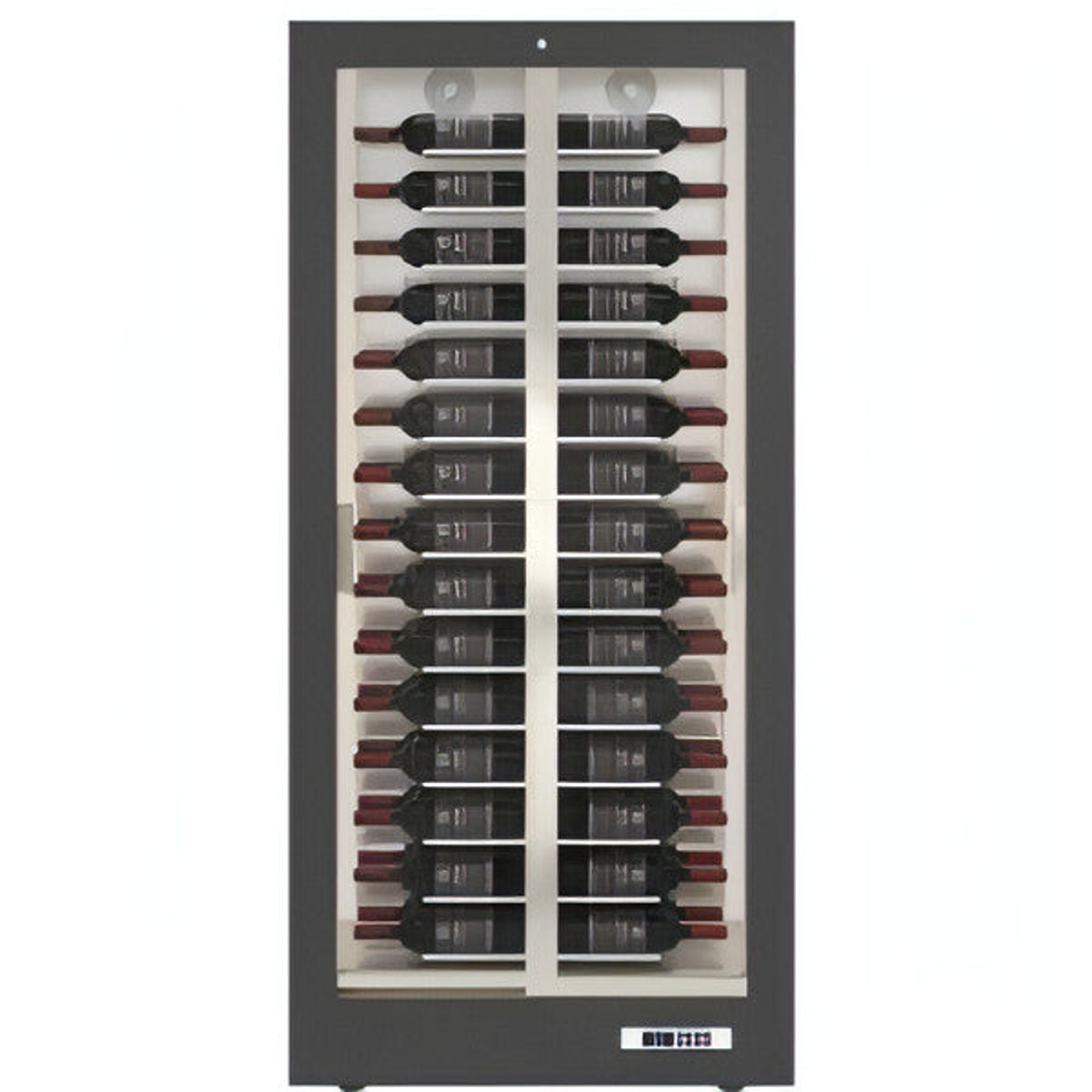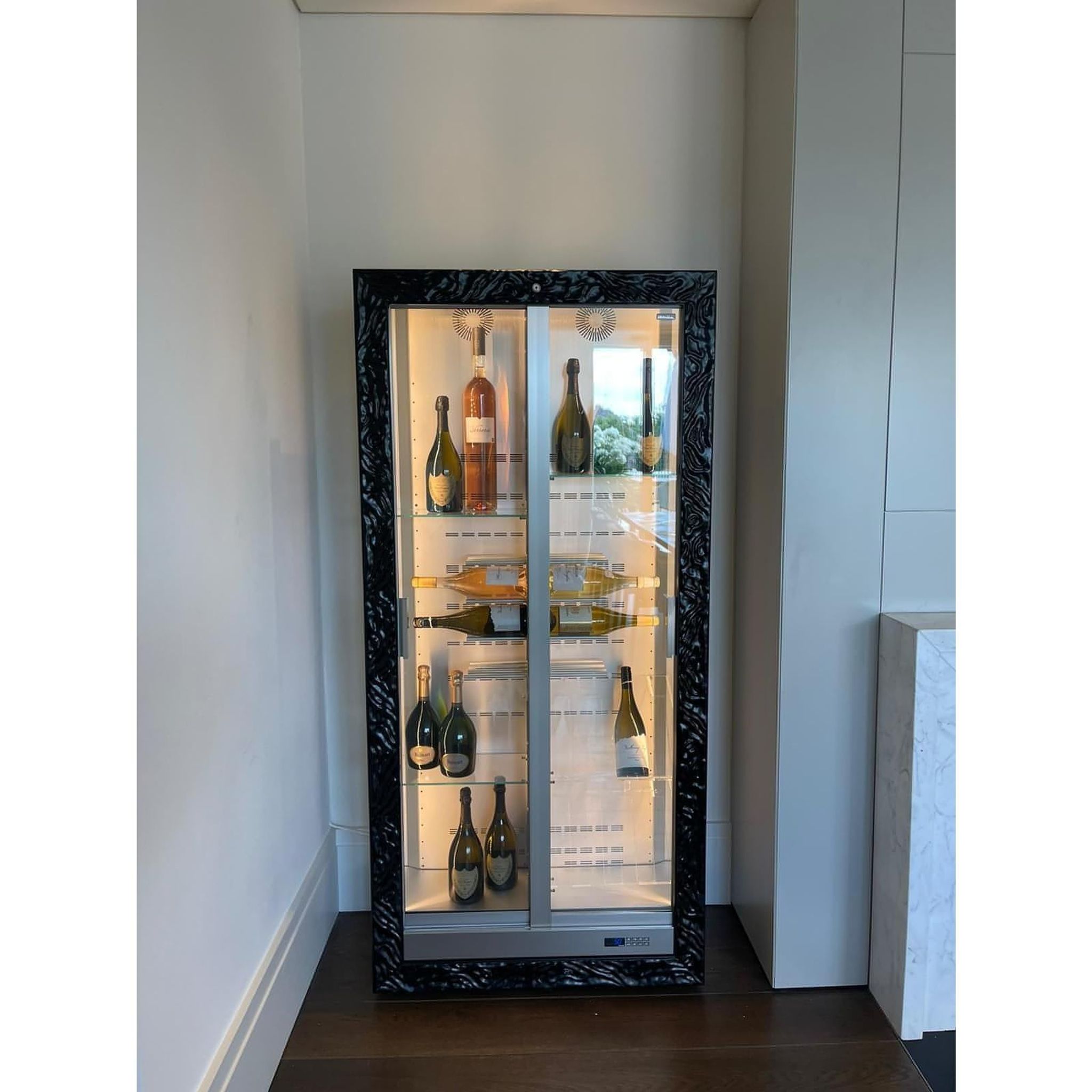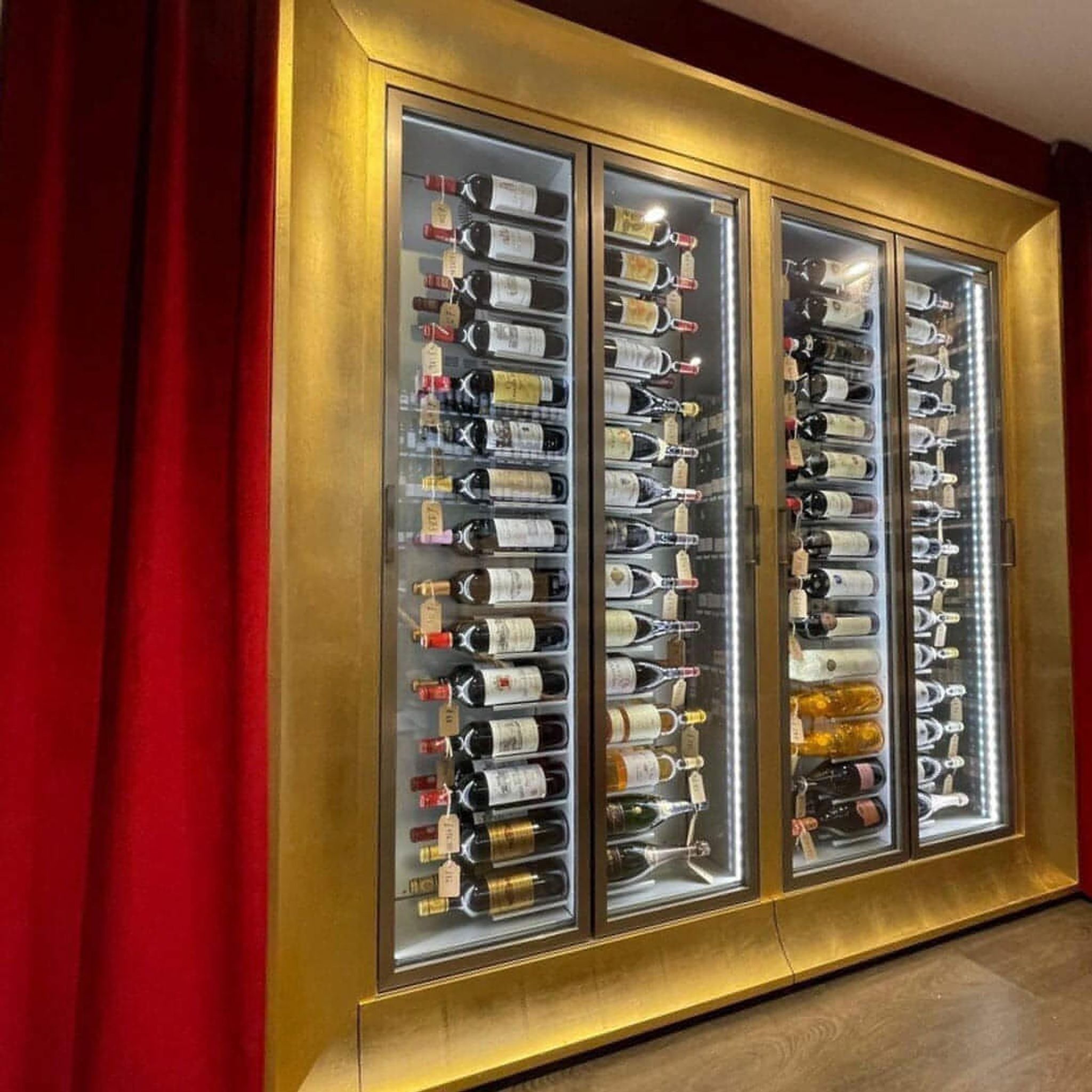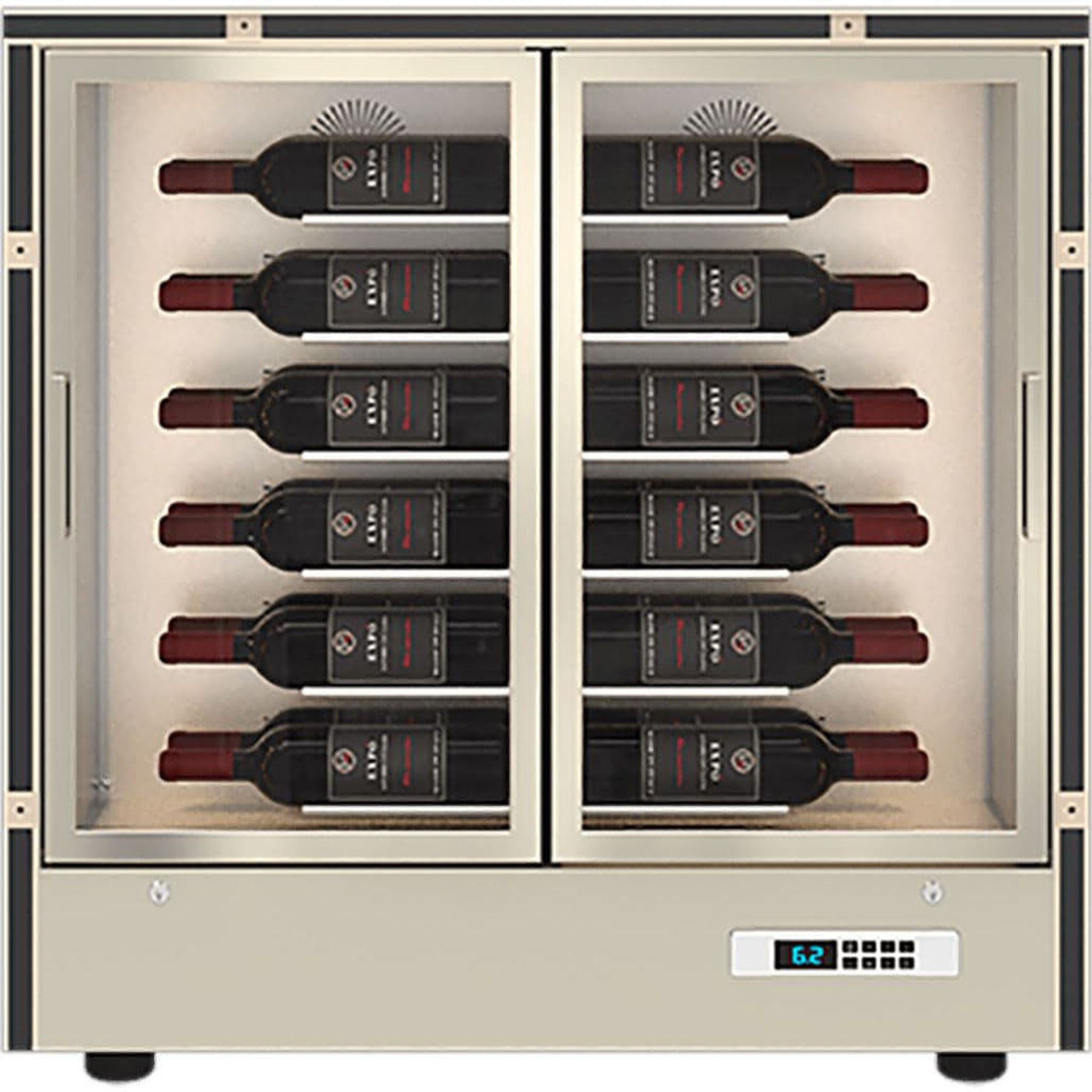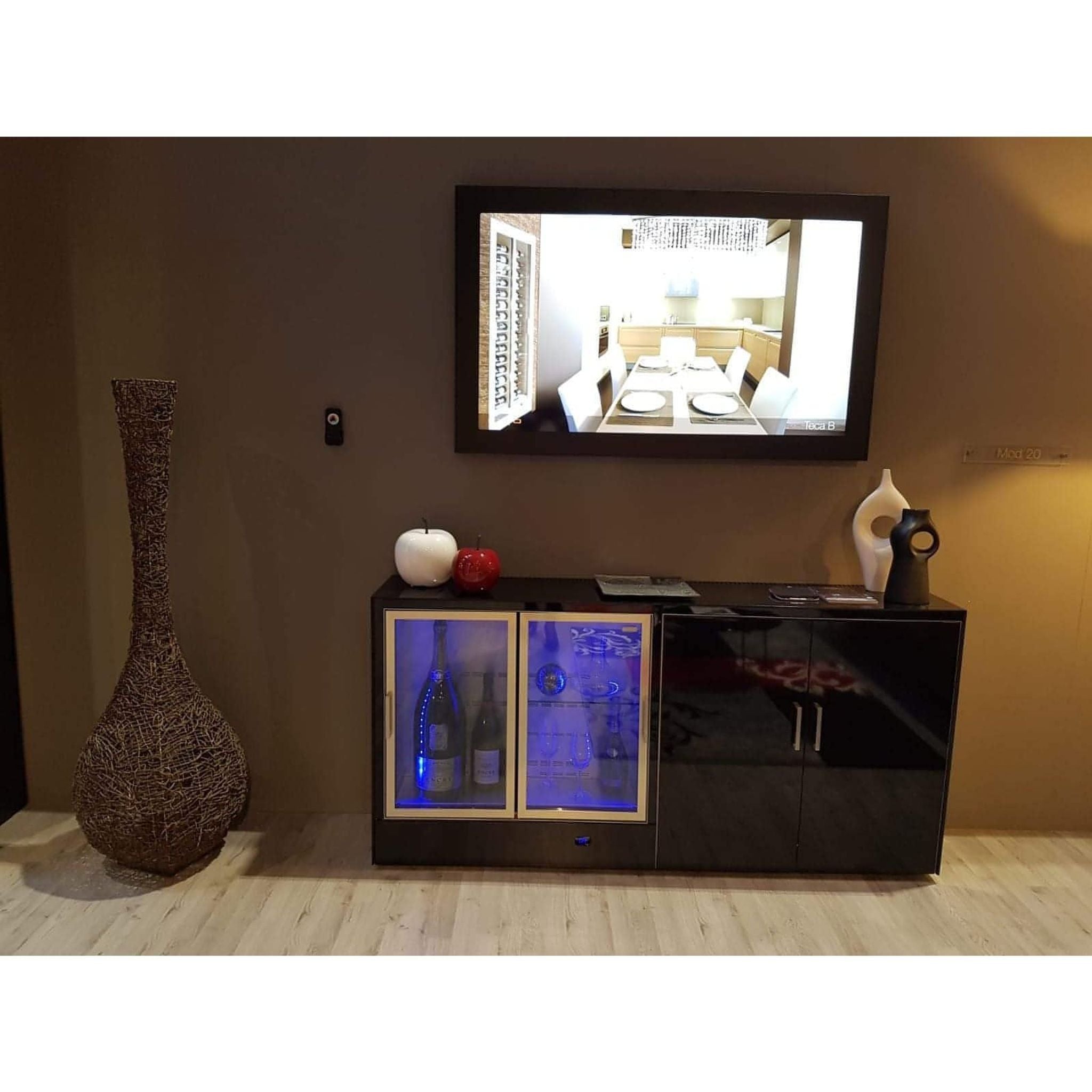If you’ve ever wondered whether your home has space for a wine cellar, the answer is almost always yes.
Whether you have a small space under the stairs or a spare room, there are options for every home.
In this guide, you’ll explore practical wine cellar ideas that help you understand what your home can accommodate, as well as how to design a space that protects your collection long-term.
Can Your Home Fit a Wine Cellar (Spoiler - Probably!)
Before we explore wine cellar ideas, let's determine whether your home can actually accommodate a wine cellar. The good news is that you don’t need a basement or a large unused room - most homes have at least one area that can be converted into a functional wine space.
You can build anything from a compact cabinet-style cellar to a walk-in room, depending on your home. Here’s the minimum space required:
-
Smallest option – A wine cellar can start from as little as 60–70cm (cabinet width) if you use a wine cabinet. This is perfect if you have a spare cupboard, an unused alcove, or spare kitchen space.
-
Micro cellars – A small custom-built cellar can fit into a 1m² area, such as a narrow closet or an understairs cavity.
- Small walk-in options – If you want a walk-in feel, you’ll need around 1.5m² – 2m². This allows room for narrow racks on one or two sides and enough space to move.
What Any Wine Cellar Needs (Regardless of Size)
To store wine safely, your wine cellar space must meet three basic conditions:
1 - Stable Temperature (ideal: 10–14°C)
Wine needs a stable, cool temperature to mature properly. Fluctuations cause the wine to expand and contract inside the bottle, which can push the cork or allow oxygen in.
Even if your space feels cold enough, consistency matters more than the exact number. If your designated wine storage space is anywhere near appliances (e.g washing machine or dishwasher), or gets warm seasonally, you’ll likely need a wine cellar conditioning unit or a temperature-controlled wine cabinet to keep temperatures stable.
2 - Controlled Humidity (ideal: 55–75%)
Good humidity levels prevent your wine from drying out. If levels drop too low, corks shrink and let air in; but if they climb too high, mould may develop. A basement or understairs area often has naturally higher humidity, but most indoor rooms will need some extra humidity support.
Wine fridges and wine cabinets manage both temperature and humidity at once, which keeps the environment balanced without overcorrecting (which is common with standard dehumidifiers). You can learn more about humidity in wine storage in this guide.
3 - Protection from Vibration & UV Light
UV light can have a huge impact on wine. It breaks it down, affecting flavour, aroma, and colour - so keeping your bottles away from windows or harsh lighting is an absolute must.
Vibration can also impact the quality of your wine - it can affect the sediment and prevent wines from ageing. Choose a quiet location where you won't disrupt it much, and opt for stable, well-installed wine racks (or a wine cabinet with vibration reduction!) for optimal storage.
Wine Cellar Ideas for Small Homes & Compact Spaces
If you have a small home or want to fit a wine cellar into a small space, here are our top wine cellar ideas for small spaces:
1 - Under-Stairs Wine Cellar

This is one of the most popular solutions for small spaces. The angled shape of an understairs area creates a perfect, cosy atmosphere for a wine cellar. Understair spaces are perfect as they are usually dark and cool, unused, and it's easy to add wine racks or cabinets there.
Ideas to try:
- Install a glass frontage for a modern look
- Use modular racks from Expo Home
- Add LED strip lighting to highlight the bottles
Keep a thermometer in there to monitor the temperature – and if the space gets warm, add a wine cellar conditioning unit.
2 - Convert a Wardrobe or Cupboard

If you have a cupboard or wardrobe space you're not using, why not turn it into a wine storage space? Even a shallow cupboard can be converted into a small wine cellar with the right equipment.
There are two main ways you can use cupboard space:
Built-in Wine Cabinet:
If you’re looking for temperature control with minimal effort, a freestanding or integrated wine cabinet fits perfectly into a cupboard space.
Custom Mini Cellar:
Add wall-mounted racking and a compact cooling system.
This option is perfect if you are short on floor space, have a smaller wine collection, or want a hidden or discreet cellar.
3 - Turn an Alcove into a Feature Wine Wall

If you have an alcove in your living room, kitchen or dining room, it could make the perfect wine display that also functions as a wine cellar.
Design ideas:
- Floor-to-ceiling wine racking
- Glass doors to lock in cool air
- Black steel, oak or modular EXPO racking for a bespoke look
- Alternatively, large freestanding wine cabinets
Don’t forget about temperature – if your alcove is in a warm room (or near a fireplace or radiator), use a wine cabinet instead of open racking to protect your bottles.
Wine Cellar Ideas for Bigger Spaces
If you have a spare room, basement, utility space, or garage area, you can create a larger, fully custom wine cellar. Here are some ideas:
4 - Full Basement Wine Room

Basements are naturally cool and low-light, making them the perfect option.
You could include:
- Wall and floor insulation
- Full racking layout (timber, metal, or mixed)
- Dedicated conditioning unit for temperature control
- A tasting station or worktop
The best materials for large wine cellar racking include wood (oak, pine, walnut or mahogany), metal (steel or aluminium), or mixed materials (for modular systems). Wood is perfect for a more traditional look, whereas metal can give a modern feel.
5 - Climate-Controlled Wine Room in a Spare Room

If you don’t have a basement, you can convert a spare room if you have one. You'll need proper insulation to keep your wine protected from temperature fluctuations - and to keep your wine away from direct sunlight. You can choose between wall racks or cabinet-based storage for your wine room.
This option works if you want:
- A walk-in experience
- Space to grow a larger collection
- Full control over layout and design features
6 - Glass-Fronted Wine Cellar Feature

This option gives a luxury feel for modern homes. It can work perfectly in dining rooms. open spaces, kitchen extensions and even hallways. Here are some benefits:
- Becomes a visual focal point
- Easy access to bottles
- Works with both racking and wine cabinets
Note – Glass doesn’t protect against UV or heat, so climate control must be done properly.
Summary – Which Wine Cellar Idea Is Best For My Home?
Use this guide to quickly match your home to the best idea:
- Small home? Try understairs, alcove, or cupboard conversion.
- Medium home? Consider a glass feature wall or a climate-controlled spare room.
- Large home? Build a basement or full walk-in cellar.
- Minimal work? Choose a wine cabinet for perfect conditions with no construction.


